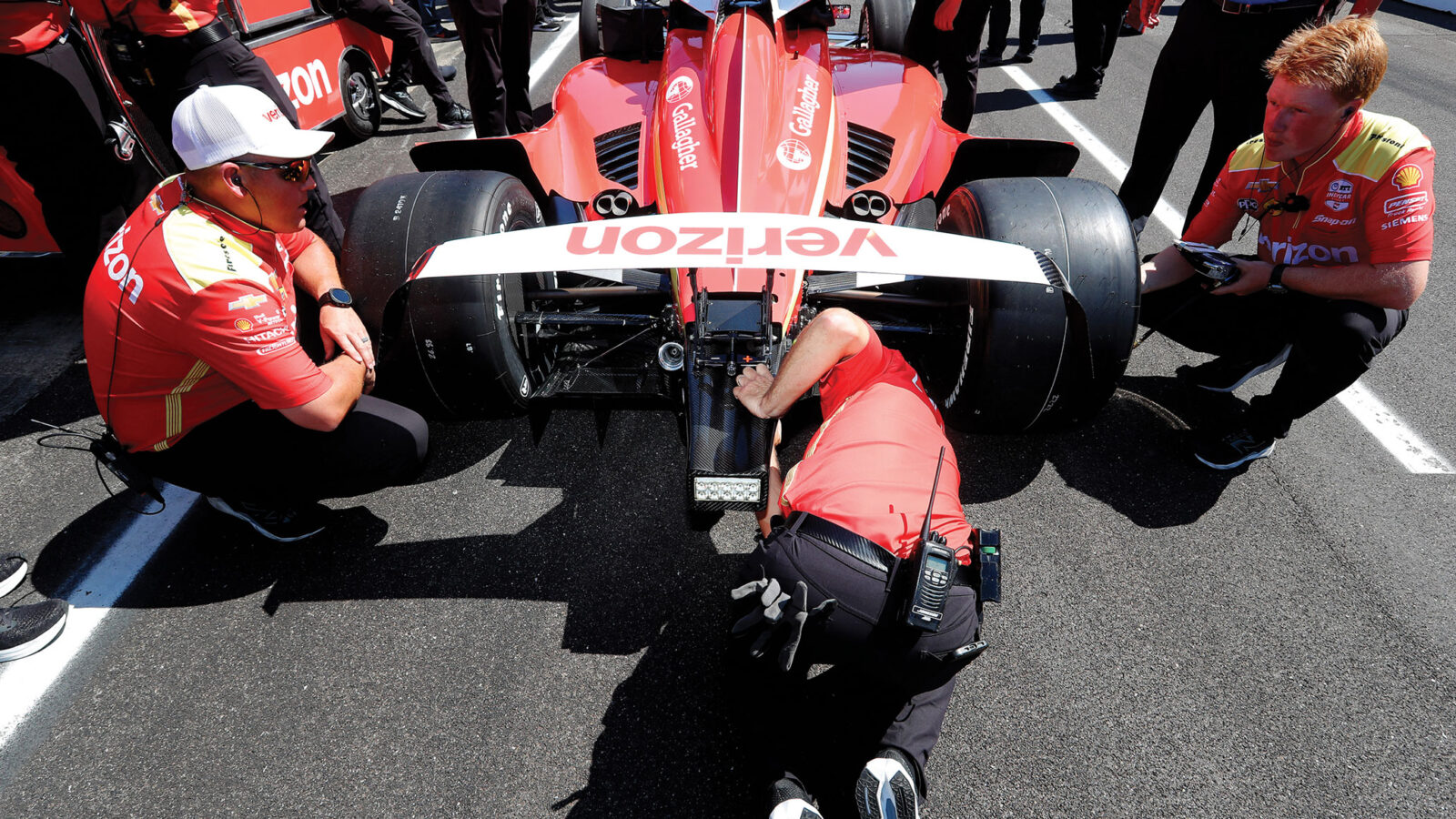‘I moved to Indianapolis so I could walk to the Indy 500’
Stateside reporter John Oreovicz explains how he bought his house based on its proximity to Turn 1 at the Indianapolis Motor Speedway

In the Indy 500, Penske’s Will Power and Josef Newgarden will start from the back
Getty Images
I’m writing this on May 20, which means it’s a festive time in my neighbourhood. You see, I live four blocks from Turn 1 of the Indianapolis Motor Speedway, and the city of Indianapolis celebrates the Indianapolis 500 and the month of May like no other community in the world supports a marquee sporting event. In Indianapolis, May is a state of mind, a month-long holiday when skipping work to spend afternoons drinking beer and watching practice at the track is considered an excused absence.
“I live four blocks from Turn 1 of the Indianapolis Motor Speedway”
I’ve lived in the state of Indiana for most of my life and started attending the Indy 500 in 1978. Fifteen years ago, I moved to the Town of Speedway, within earshot of IMS, because I wanted to truly enjoy the whole Indy 500 experience again after so many years of rushing to the track before dawn to beat the Race Day traffic. Living within walking distance, I can once more enjoy a few beers with my friends and soak in the festive ‘Night Before the 500’ atmosphere, get a decent night of sleep, then step on over to the media centre (or Honda hospitality for breakfast) in just a few minutes.
The Speedway announced this year’s race was the first since the historically significant 100th running in 2016 to achieve a full sell-out of the 240,000-strong grandstands. Factor in a packed infield, and the total attendance is in reality around 350,000. But as so often happens for IndyCar, the feel-good factor of the sell-out was squandered on qualifying weekend when Team Penske was caught in its second high-profile cheating scandal in the past 14 months.
An anomaly was discovered on Will Power’s car as it went through pre-qualifying technical inspection and found also on Josef Newgarden’s. The infraction was tiny: a seam between two components making up the rear attenuator, or crash bumper, were smoothed together. But the rule book is clear that spec parts cannot be modified in any way. Newgarden and Power were put to the back of the grid, while Scott McLaughlin escaped penalty because the car he crashed prior to qualifying was found to feature legal parts. Enterprising sleuths soon noted the same illegal modification was evident on Newgarden’s 2024 Indy-winning car, now on display in the Speedway’s newly renovated (and spectacular) museum.
Given its long and successful history, Team Penske has always been held to a higher standard than other racing teams. And now that Penske Entertainment also owns and operates the IndyCar Series and the Indianapolis Motor Speedway, the optics of a Team Penske cheating scandal at Roger Penske’s beloved Indianapolis 500 are sub-optimal. There’s no separation between church and state, and the perception is of one branch of the Penske Corporation turning a blind eye towards another’s misbehaviour, at most giving it a firm slap on the wrist. Patience among fans, and especially within the IndyCar paddock, is starting to wear thin.
“All teams have a certain responsibility to uphold the integrity of the sport, in any series, no more than Team Penske,” said rival team owner Chip Ganassi. “It’s certainly a problem when the pursuit of winning compromises integrity and sportsmanship.”
The Indy 500 is a long and unpredictable race, and Power and Newgarden are still capable of victory from the 11th row. If a Penske driver wins on May 25, the jeers could drown out the cheers.
Earlier this year at the Daytona 24 Hours IMSA race, my 18-year-old sports car racing-enthusiast son surprised me by saying he wanted to attend a NASCAR race at Talladega Superspeedway. Decades of stock car stereotyping and a popular Will Ferrell movie have made Talladega a punchline for jokes. But attending a stock car event at the high-banked Alabama tri-oval should be on the bucket list of any true racing fan.
The sheer scale of it all is staggering. At 2.66 miles with 33-degree banking, the track is longer than Indianapolis and steeper than Daytona. The camping scene spreads out over several square miles, and it’s a diverse party crowd ranging from grizzled old-timers to frat boys and groups of girls in denim shorts and mud-kicking cowboy boots.
We sat high in the massive grandstand, and there’s nothing like the sight and sound of a pack of rumbling stock cars roaring past in a three-wide, 10-deep pack. Then it’s relatively quiet until they all blast by again 50 seconds later.
What NASCAR now calls ‘drafting tracks’ are incredibly dangerous, and the wrecks are sometimes outrageous, but when the racing is clean like it was for this year’s Talladega 500, what a spectacle!
Laguna Seca Raceway in California and Talladega are separated by half a continent and an even bigger cultural gap. But IMSA somehow put together two hours and 40 minutes of caution-free sports car competition that was as tightly contested as most NASCAR races.
The top three cars took the white flag separated by less than a second before a thrilling last lap saw Dries Vanthoor’s BMW GTP come up just short in a fierce battle with the factory Porsches, which claimed their third 1-2 finish in the first four races of the season. While IndyCar is embroiled in controversy and NASCAR is dealing with its own issues, IMSA quietly continues to gain momentum and strength.
Based in Indianapolis, John Oreovicz has been covering US racing for 30 years. He is author of the 2021 book Indy Split
